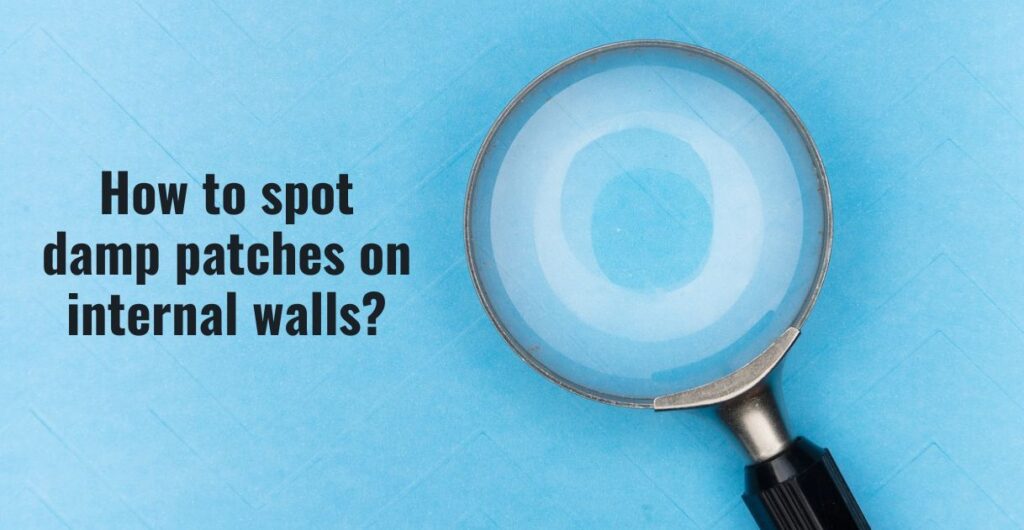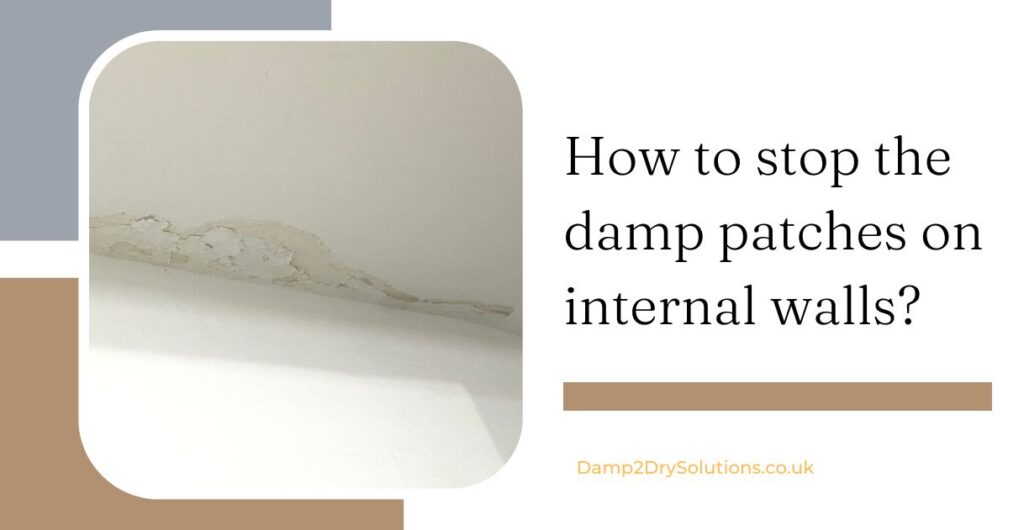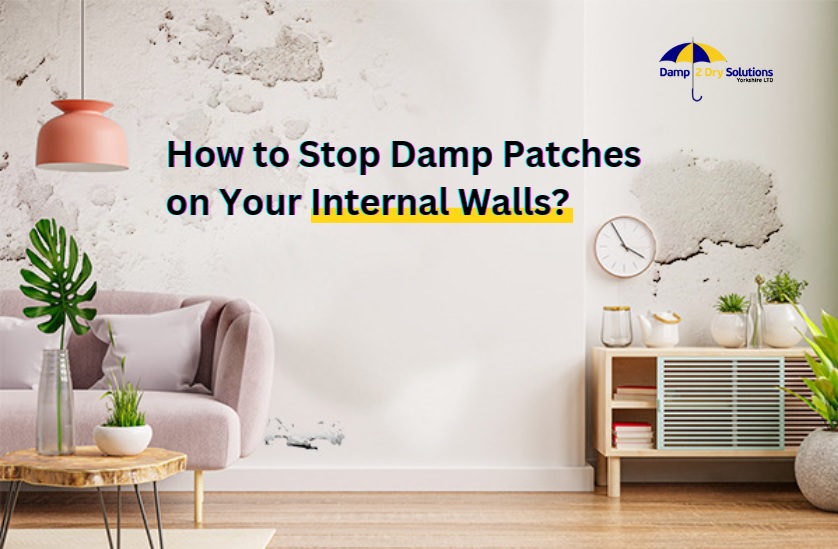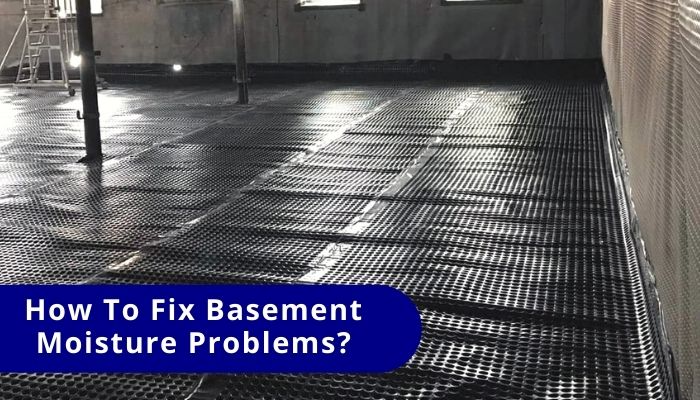Damp patches derogate the appearance of the building, whether it is in your living room or bedroom. Wet walls inside the house also damage the health and structure. Dampness may lead to the worsening of stones, plaster, tiles and also expensive wallpapers and deteriorate timber.
People often don’t take it seriously and prefer cheap treatments, which cause more damage and expenditures. A damp patch on the internal wall can be caused by any reason. It is necessary to discover the exact reason why you have wet patches on walls so that you get rid of it.
Damp spots on walls also have a lot of negative effects. Visually they are unappealing and affect the overall look of your home décor.
Also, a damp patch on the wall can lead to respiratory problems like asthma and allergies and affect your immune system and make it weak.
How to spot damp patches on internal walls?

Damp is the presence of condensation or other moisture on a property’s structure. Spotting the existence of damp walls in your house is not that difficult, especially during the monsoon weather or rainy season.
Moisture buildup can cause a slew of issues, and if not addressed, it can significantly harm the building’s infrastructure.
Damp patches on internal walls tend to worsen over time, but they can go undetected if you don’t know where to look. And by the time they’re discovered, significant work may be required to correct the situation.
If a house has damp patches, it appears to mean there is excess moisture. It is commonly found on walls, ceilings, and floors.
Once water or moisture enters your home, it can cause a dampness problem. This could be due to condensation around window panes, but there could be a variety of other causes.
These are some examples:
- Overflows and leaking or burst pipes.
- Roof tiles that are broken or missing allow water to enter.
- Gutter blockage.
- Windows that are leaking.
- A dishwasher or washing machine that is leaking.
A musty odour may be the only indication of a potential problem in the early stages.
If you’re seeing random round wet patches of paint without mould or staining, they’re often caused by hidden moisture—such as condensation or minor leaks behind the wall surface.
To detect wet patches in your home, inspect internal walls, ceilings, and floors for signs like lifting surfaces or wet spots. Check for leaky pipes, roof damage, overflowing gutters, or structural issues that might be causing moisture intrusion
If you suspect your home has rising damp, try running your hands throughout the affected area. You should be able to sense the plaster salts if it feels wet. These really are white deposits that are washed into the plaster from the bricks.
If there is wallpaper, move your hand over the salts and listen for a slight crunching sound.
Other tell-tale signs of wet patchs in a house usually involve:
- Mold or mildew growth on walls, floors, or ceilings.
- Walls with water droplets.
- Walls or plaster with dark or discoloured spots.
- Too much condensation on windows throughout the year, not just in the winter.
- Woodwork that has rotted, such as skirting boards.
How to stop the damp patches on internal walls?

You can stop the damp spreading by identifying the damp on time and getting it treated before it becomes more worst.
Due to moisture, the damp rises in your walls and can start damaging the walls internally. Continuous rain in monsoons can dampen the exterior of the walls.
If you don’t have much idea regarding dampness, you should get the help of a skilled and waterproofing expert who will guide you properly. We fix many objects on our walls using bolts, screws and such items. In many cases, these fixings stick out through the inner walls and into cavity voids.
If there is any dampness present within the cavity area, then the moisture and water will directly enter the wall if you allow it to settle on the part of the fixing in the cavity.
This water and moisture can then cause dampness to appear on your walls. To get rid of it, you have to remove the fixings that enter the cavity area of your wall and seal all the holes left with a suitable waterproof filler like silicone, waterproofing agent and so on.
Damp on internal walls is also caused by the lower part of walls caused by the capillary action of groundwater. Generally, people apply a wet-proof barrier, but they are not able to stop water to the side. If it is not noticed on time, then it can harm the brick and woodwork.
To avoid it, you can use good quality waterproof chemicals in DPC (Damp Proof Course), which will make the entire DPC a water barrier. Any kind of plastic sheet can be used in DPC, which has a high possibility of tearing during masonry work.
If the damp patches on walls result from condensation, the issue is often relatively simple to remedy. If your house is poorly ventilated or has an excess of moisture, it can cause damp patches on the inner walls. This is when the warm moist air comes into contact with a cooler surface, mainly in the internal wall. In such cases, a lick of damp-proof paint is an excellent idea to offer protection for the future.
Conclusion
Damp patches on internal walls are generally treated by reducing the amount of moisture and improving ventilation in the house, repairing a building or structural defects or inserting a new damp-proof course (DPC).
Identifying the cause of damp patches can be not less than a nightmare as there are many potential causes, but once you have identified the cause and get rid of it, you can be sure that they will not come back.
Whether you’ve got damp walls, mold on walls or ceilings, or condensation, don’t worry – Damp2Dry offers a Damp Survey with no obligation*
We Provide Bespoke Services accross entire Yorkshire
South Yorkshire- Barnsley, Bawtry, Dinnington, Doncaster, Hatfield, Mexborough, Penistone, Rotherham, Sheffield, Wombwell
West Yorkshire- Huddersfield, Bradford, Brighouse, Castleford, Cleckheaton, Dewsbury, Halifax, Hebden Bridge, Holmfirth, Batley, Ilkley, Keighley, Leeds, Morley, Normanton, Ossett, Otley, Pontefract, Pudsey, Todmorden, Wakefield, Wetherby, Yeadon
East Yorkshire- Bridlington, Beverley, Driffield, Goole, Hedon, Hessle, Hornsea, Howden, Kingston upon Hull, Market Weighton, Pocklington, Withernsea
Note – We do not offer services beyond Yorkshire, including London, Scotland, or mainland Europe.






